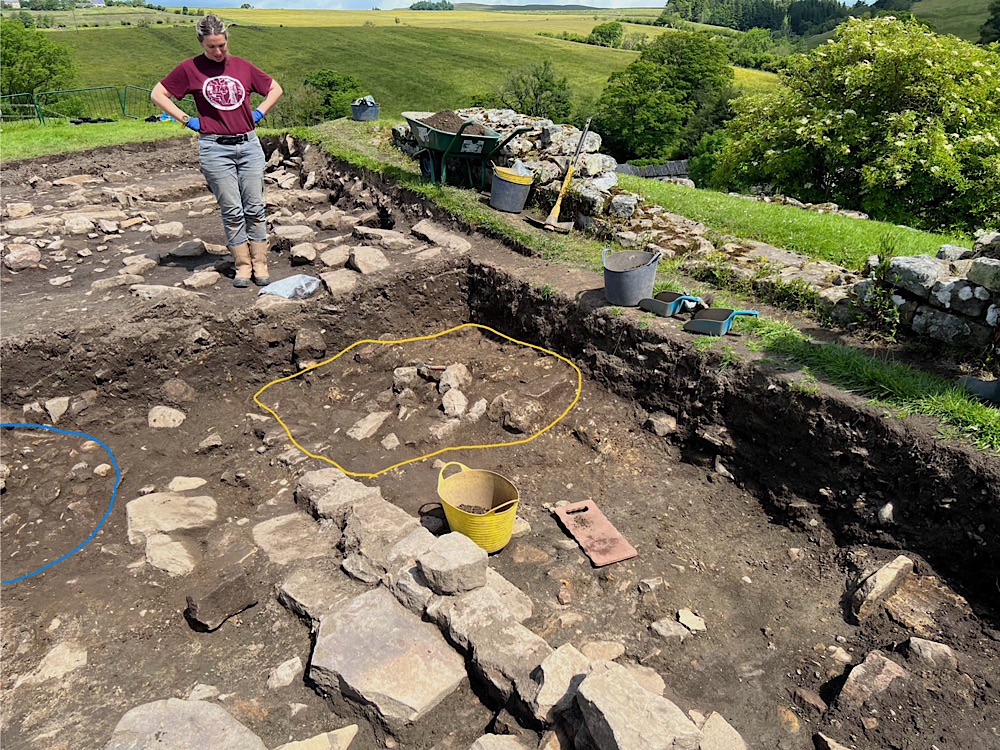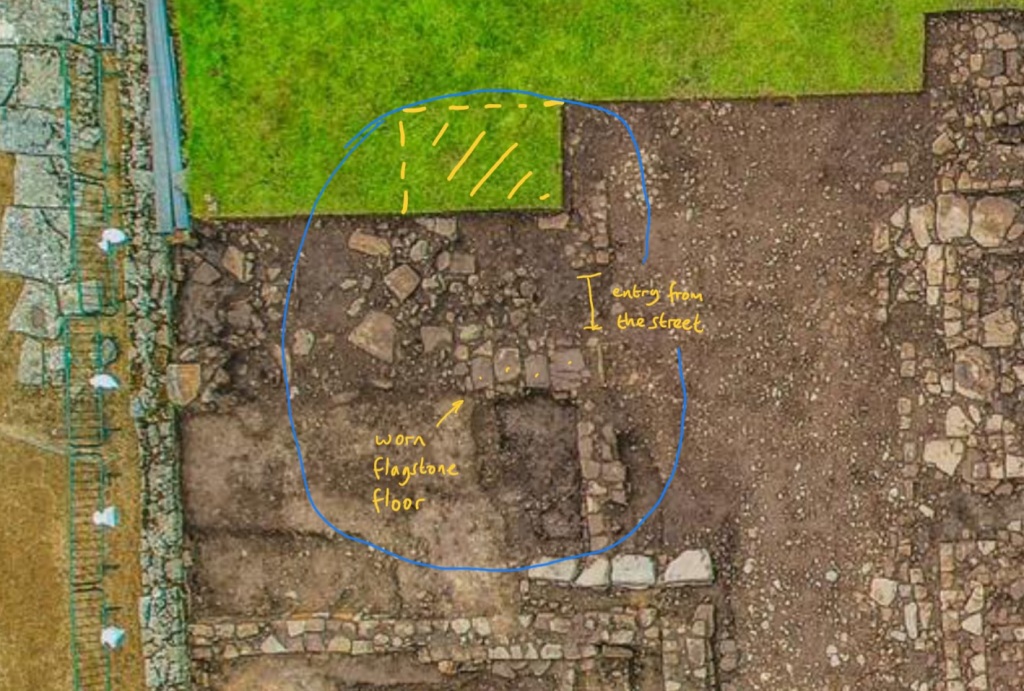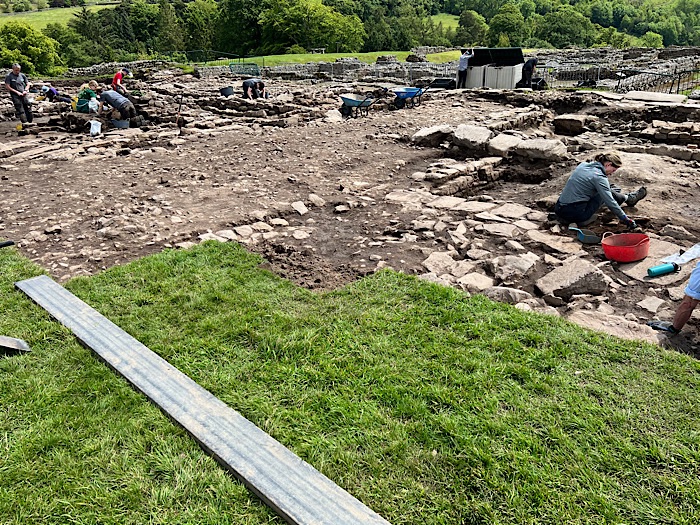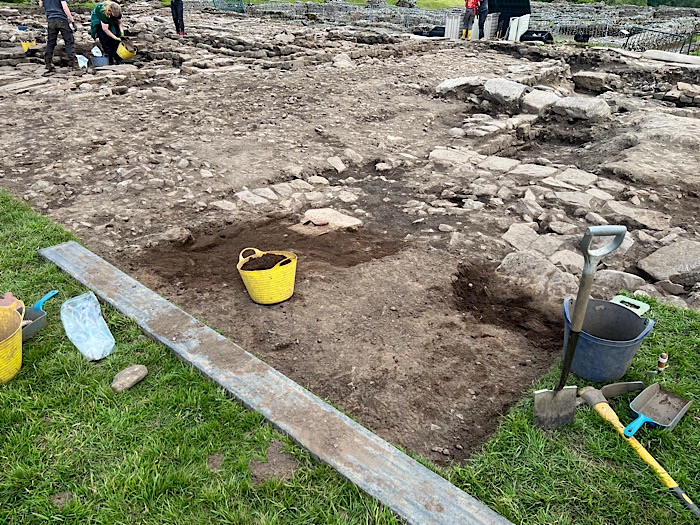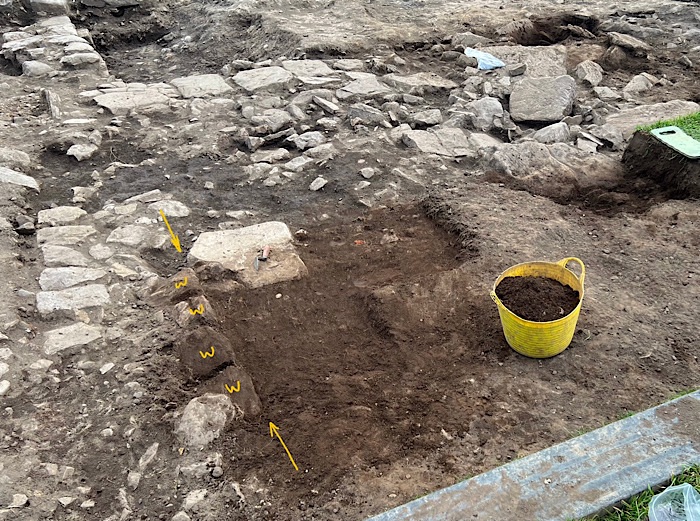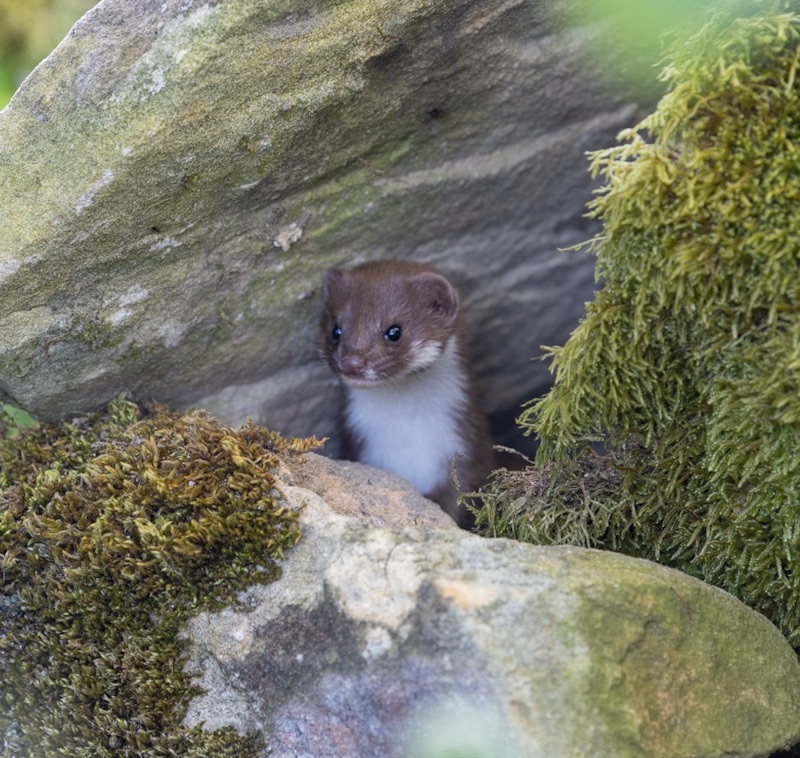The warmth of week two persisted today, although only after a chilly and thick mist cleared during the morning. Things heated up properly late in the day, though…

The goal for the day was clear, follow the floor all the way to the southern end of the barrack room. Pippa joined me in this task and quickly picked up a couple of nice small finds, one of which I can show: a tiny, green glass bead that would probably have been threaded onto a thin, copper alloy bracelet. I also had one a little later, a small, curved piece of copper alloy that will be difficult to identify; Marta labeled the small-find ziploc bag for it as “Cu alloy dufus”. I’ve shown both below, along with a personal altar from elsewhere in the trench that caused a big gathering of diggers shortly before noon.



Progress was slow, partly because the clear stone floor mostly disappeared which made me more cautious, but also because its replacement was a compacted, tan-colored clay that required some hard, wrist-sapping troweling to get through. By the afternoon the sun was out in force, again making me glad to be in shorts; the finds also heated up.
One find of mine can’t be described here, another from elsewhere was a thing of beauty that I’ll wager will be featured in the video summary this weekend. The last one I found just before digging ended for the day – part of a lock plate. The intact plate would have had an opening for the key, with the lock mechanism itself hidden behind it. I might have discarded it as simply a thin piece of shale, except for the rivet in one corner.

However, the find of the day for me was structural. As I was trying to finish up the floor level near the barrack wall I tossed a couple of small, loose stones on top the wall and tidied the loose soil beneath them. One relatively thin, flat stone appeared, then another, followed by a third and each was set into a curved ledge in the wall. I’d also noted an area of burning in the clay just below, so it was clear I had to call Andy over.

He took one look and confirmed it was an oven, before inviting me over to one of the barrack blocks in the northwest quadrant. There was an oven he’d excavated, years before, set into the wall in just the same way (below). We’ll investigate my new oven further tomorrow, with some environmental samples from the burned area hidden below the later flagstone now lying next to it. A hot day indeed.





















